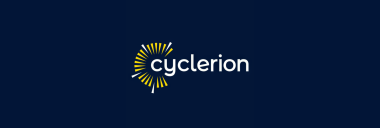Tonix Pharmaceuticals Announces Publication of Patent Application for TNX-1500 (Monoclonal Antibody Anti-CD40-Ligand) in Development for Preventing and Treating Organ Transplant Rejection and Treating Autoimmune Conditions
Rhea-AI Summary
Tonix Pharmaceuticals (Nasdaq: TNXP) announced that a patent application for TNX-1500, a monoclonal antibody targeting CD40-ligand, has been published by the World Intellectual Property Organization. This patent could provide U.S. patent coverage until 2040. TNX-1500 is designed to minimize thrombosis risks while maintaining efficacy, aiming to treat organ transplant rejection and autoimmune disorders. The company anticipates GMP production of TNX-1500 by Q3 2021. Tonix's development strategy leverages prior clinical insights, addressing significant treatment gaps in this area.
Positive
- Publication of a patent for TNX-1500 may secure U.S. patent protection until 2040.
- TNX-1500 is designed to reduce thrombosis risk while maintaining efficacy, addressing significant medical needs in transplant rejection and autoimmune disorders.
- Expected GMP production of TNX-1500 in Q3 2021 indicates progress towards commercialization.
Negative
- None.
News Market Reaction 1 Alert
On the day this news was published, TNXP declined 4.35%, reflecting a moderate negative market reaction.
Data tracked by StockTitan Argus on the day of publication.
GMP Production of TNX-1500 is Expected to be Available in the Third Quarter of 2021
CHATHAM, N.J., Jan. 14, 2021 (GLOBE NEWSWIRE) -- Tonix Pharmaceuticals Holding Corp. (Nasdaq: TNXP) (Tonix or the Company), a clinical-stage biopharmaceutical company, today announced that the World Intellectual Property Organization has published a patent application filed under the Patent Cooperation Treaty covering TNX-1500, a humanized monoclonal antibody (mAb) directed against CD40-ligand, which is also known as CD154, T-BAM, 5c8 antigen, TRAP and gp39. The patent application is titled “Anti-CD154 Antibodies and Uses Thereof” and published under International Publication No. WO 2021/001458 A1. If claims are granted, a patent issuing from a national stage of this application could potentially provide U.S. patent coverage for the TNX-1500 composition of matter through 2040 excluding possible patent term extensions or patent term adjustments.
Tonix’s President and Chief Executive Officer, Seth Lederman, M.D. said, “Nearly 30 years ago my laboratory at Columbia University generated the first anti-CD40-ligand mAb (5c8), discovered and characterized human CD40-ligand and elucidated the molecular basis of T cell helper function1. Collaborating with a team at Biogen Inc., we determined the crystal structure of CD40-ligand2, developed a humanized version of our antibody (hu5c8, ruplizumab, or Antova®) and tested it in human trials for preventing organ transplant rejection and autoimmunity. Our studies and those of others generated a substantial body of evidence in humans and animals that indicates anti-CD40-ligand mAbs have the potential to be an important therapeutic option for preventing or treating transplant organ rejection and for treating autoimmune disorders.”
Dr. Lederman continued, “Despite the recognized promise of anti-CD40-ligand mAb therapy, first generation anti-CD40-ligand mAbs were limited because their crystallizable fragment (Fc) domain interacted with a cell surface receptor called FcγRII, which resulted in an increased risk of thrombosis. Second generation anti-CD40-ligand mAbs had dramatically reduced binding to FcγRII, but had other issues, including decreased efficacy3-5. TNX-1500 is a third generation anti-CD40-ligand mAb that has been designed by protein engineering to decrease FcγRII binding and the potential for thrombosis, while retaining efficacy. We believe TNX-1500 has the potential for treating and preventing organ transplant rejection and treating autoimmunity.”
TNX-1500 incorporates the antigen binding fragment (Fab) region of hu5c8, which has been extensively characterized including at the atomic level in complex with CD40-ligand6. The newly published patent application includes claims related to proprietary anti-human CD40-ligand mAbs that were engineered to have modified effector function, including TNX-1500, which have reduced potential for Fc binding to FcγRII. The patent application also claims uses of TNX-1500 for preventing and treating conditions, such as organ transplant rejection and autoimmune disorders.
Dr. Lederman added, “We believe the development risk of TNX-1500 is mitigated by previous clinical data and extensive preclinical science with ruplizumab. We are developing the manufacturing processes for TNX-1500 and expect Good Manufacturing Practice (GMP) TNX-1500 to be available in the third quarter of 2021. There remains a significant need for new treatments with improved activity and tolerability to prevent or treat organ transplant rejection and to treat autoimmune conditions, including systemic lupus erythematosus, rheumatoid arthritis and multiple sclerosis.”
1 Lederman, S. et al. J. Exp. Med. 175:1091-1101 (1992)
2 Karpusas, M et al., Structure 3:1031-1039 (1995)
3 Waters J, Biocentury; October 26, (2018)
4 NCT02273960; ClinicalTrials.gov; “Study to Evaluate Safety and Efficacy in Adult Subjects With ITP (ITP)”; results posted April 1, 2019, updated July 29, 2019 and accessed Jan 11, 2021
5 Ferrant JL et al., International Immunol. (11):1583 (2004)
6 Karpusas M, et al. Structure. 9(4):321-9. (2001)
About CD40-Ligand
CD40-ligand is a protein expressed on the surface of activated T lymphocytes that mediates T cell helper function. CD40-ligand is also known as CD154, the T cell-B cell activating molecule (T-BAM), TRAP and gp39. CD154 is a member of the Tumor Necrosis Factor (TNF) Super Family. No mAb against CD154 has been approved for commercial use anywhere in the world. Other TNF Super Family members have been successfully targeted by antagonist mAbs. Approved mAbs against TNFα include: infliximab (Remicade®), adalimumab (Humira®), certolizumab pegol (Cimzia®), and golimumab (Simponi®) for the treatment of certain autoimmune conditions. Also, etanercept (Enbrel®) is a TNFα antagonist receptor fusion protein. An approved mAb against RANKL (CD254) is denosumab (Prolia® or Xgeva®) for the treatment of osteoporosis, treatment-induced bone loss, metastases to bone, and giant cell tumor of bone.
Remicade® and Simponi® are trademarks of Janssen; Humira® is a trademark of AbbVie Inc.; Cimzia® is a trademark of UCB S. A.; Enbrel®, Prolia® and Xgeva® are trademarks of Amgen Inc.
Tonix Pharmaceuticals Holding Corp.
Tonix is a clinical-stage biopharmaceutical company focused on discovering, licensing, acquiring and developing small molecules and biologics to treat and prevent human disease and alleviate suffering. Tonix’s portfolio is primarily composed of central nervous system (CNS) and immunology product candidates. The CNS portfolio includes both small molecules and biologics to treat pain, neurologic, psychiatric and addiction conditions. Tonix’s lead CNS candidate, TNX-102 SL*, is in mid-Phase 3 development for the management of fibromyalgia, and positive data on the RELIEF Phase 3 trial were recently reported. The Company expects interim data for the Phase 3 RALLY study in the second quarter of 2021** and topline data in the fourth quarter of 2021. The immunology portfolio includes vaccines to prevent infectious diseases and biologics to address immunosuppression, cancer, and autoimmune diseases. Tonix’s lead vaccine candidate, TNX-1800***, is a live replicating vaccine based on the horsepox viral vector platform to protect against COVID-19, primarily by eliciting a T cell response. Tonix expects efficacy data from animal studies of TNX-1800 in the first quarter of 2021. TNX-801***, live horsepox virus vaccine for percutaneous administration, is in development to protect against smallpox and monkeypox.
*TNX-102 SL is an investigational new drug and has not been approved for any indication.
** Pending submission and agreement from FDA on statistical analysis plan.
***TNX-1800 and TNX-801 are investigational new biologics and have not been approved for any indication.
This press release and further information about Tonix can be found at www.tonixpharma.com.
Forward Looking Statements
Certain statements in this press release are forward-looking within the meaning of the Private Securities Litigation Reform Act of 1995. These statements may be identified by the use of forward-looking words such as “anticipate,” “believe,” “forecast,” “estimate,” “expect,” and “intend,” among others. These forward-looking statements are based on Tonix's current expectations and actual results could differ materially. There are a number of factors that could cause actual events to differ materially from those indicated by such forward-looking statements. These factors include, but are not limited to, risks related to failure to obtain FDA clearances or approvals and noncompliance with FDA regulations; delays and uncertainties caused by the global COVID-19 pandemic; risks related to the timing and progress of clinical development of our product candidates; our need for additional financing; uncertainties of patent protection and litigation; uncertainties of government or third party payor reimbursement; limited research and development efforts and dependence upon third parties; and substantial competition. As with any pharmaceutical under development, there are significant risks in the development, regulatory approval, and commercialization of new products. Tonix does not undertake an obligation to update or revise any forward-looking statement. Investors should read the risk factors set forth in the Annual Report on Form 10-K for the year ended December 31, 2019, as filed with the Securities and Exchange Commission (the “SEC”) on March 24, 2020, and periodic reports filed with the SEC on or after the date thereof. All Tonix's forward-looking statements are expressly qualified by all such risk factors and other cautionary statements. The information set forth herein speaks only as of the date thereof.
Contacts
Jessica Morris (corporate)
Tonix Pharmaceuticals
investor.relations@tonixpharma.com
(862) 904-8182
Olipriya Das, Ph.D. (media)
Russo Partners
Olipriya.Das@russopartnersllc.com
(646) 942-5588
Peter Vozzo (investors)
Westwicke
peter.vozzo@westwicke.com
(443) 213-0505







